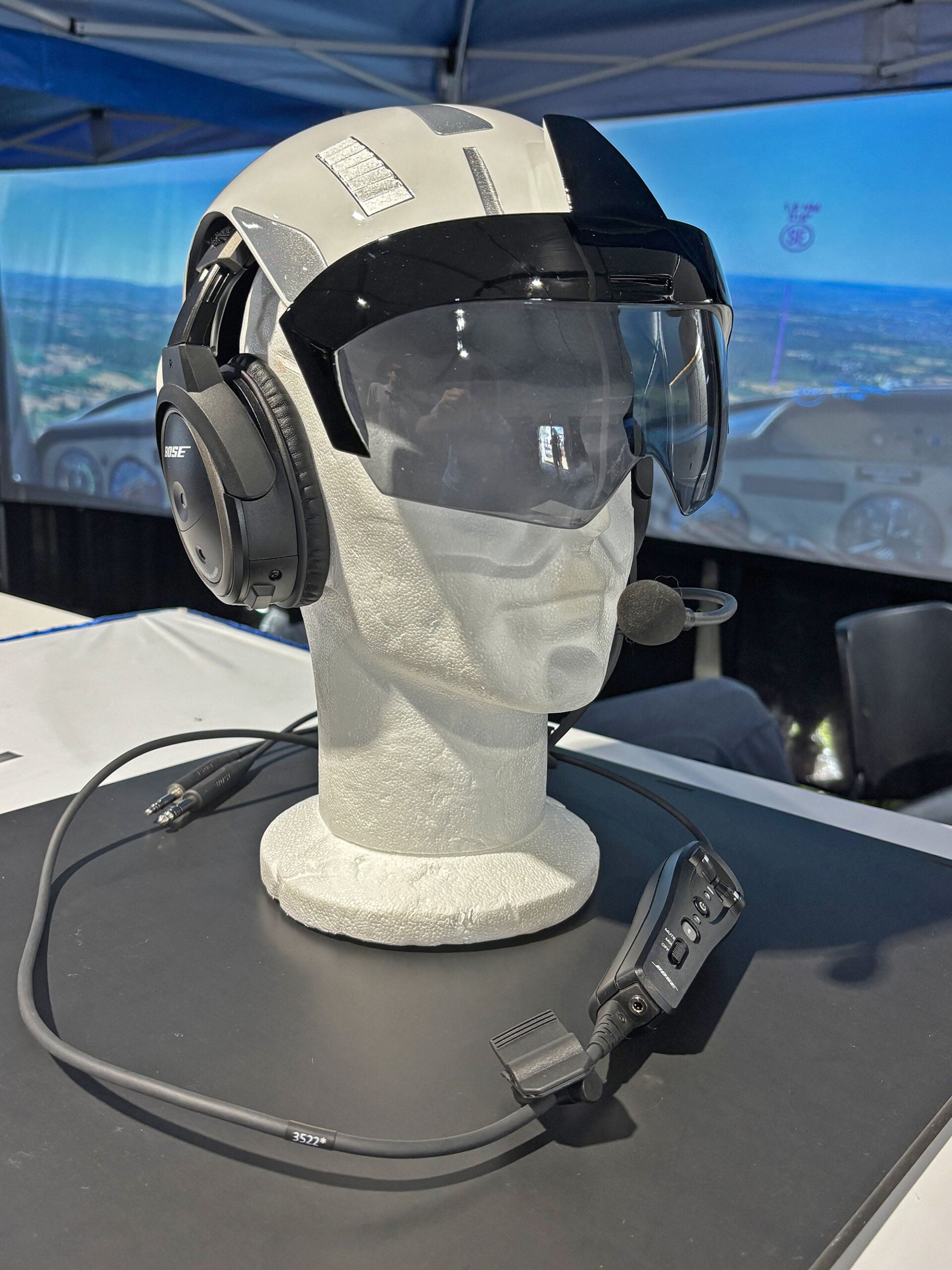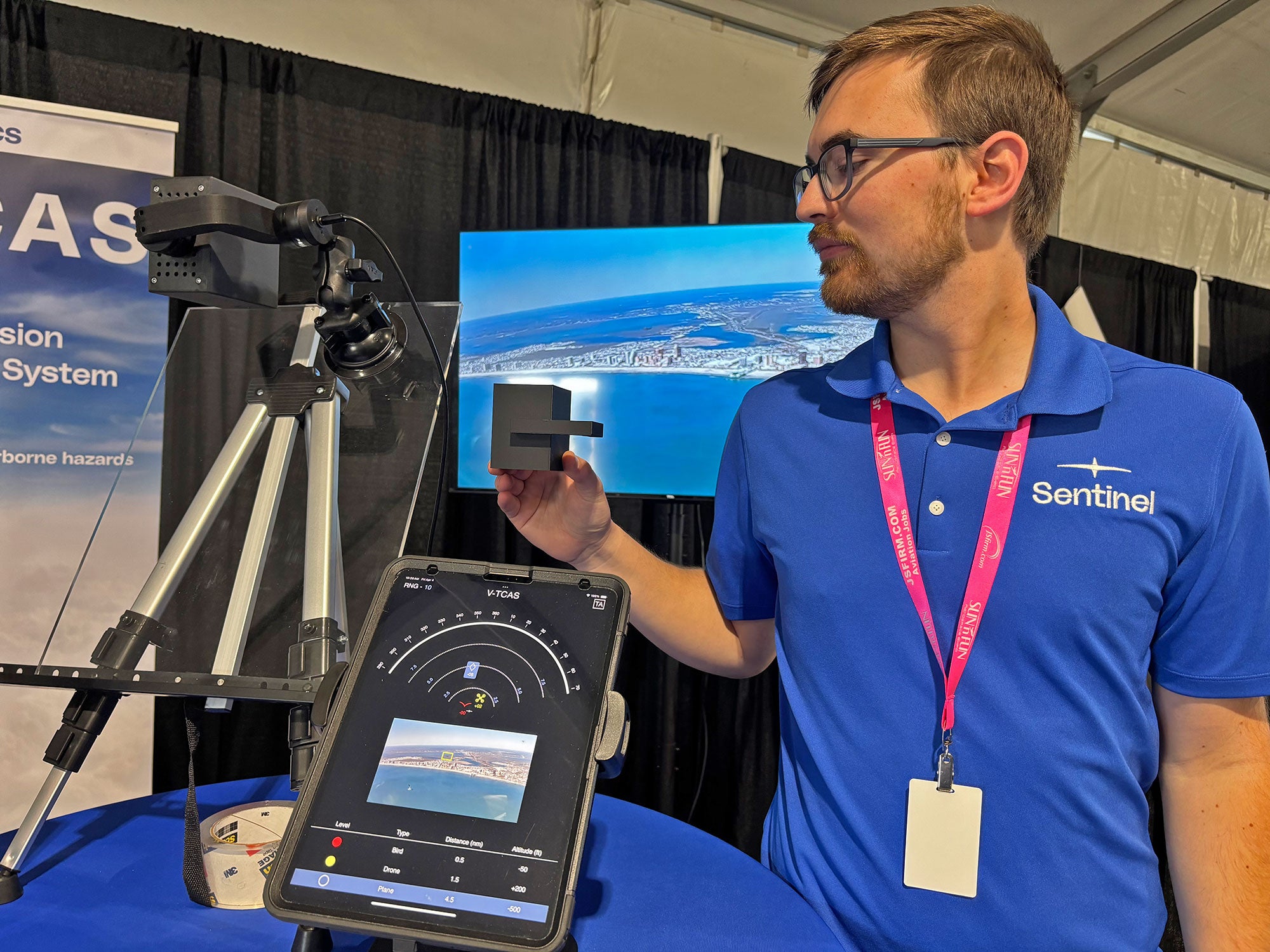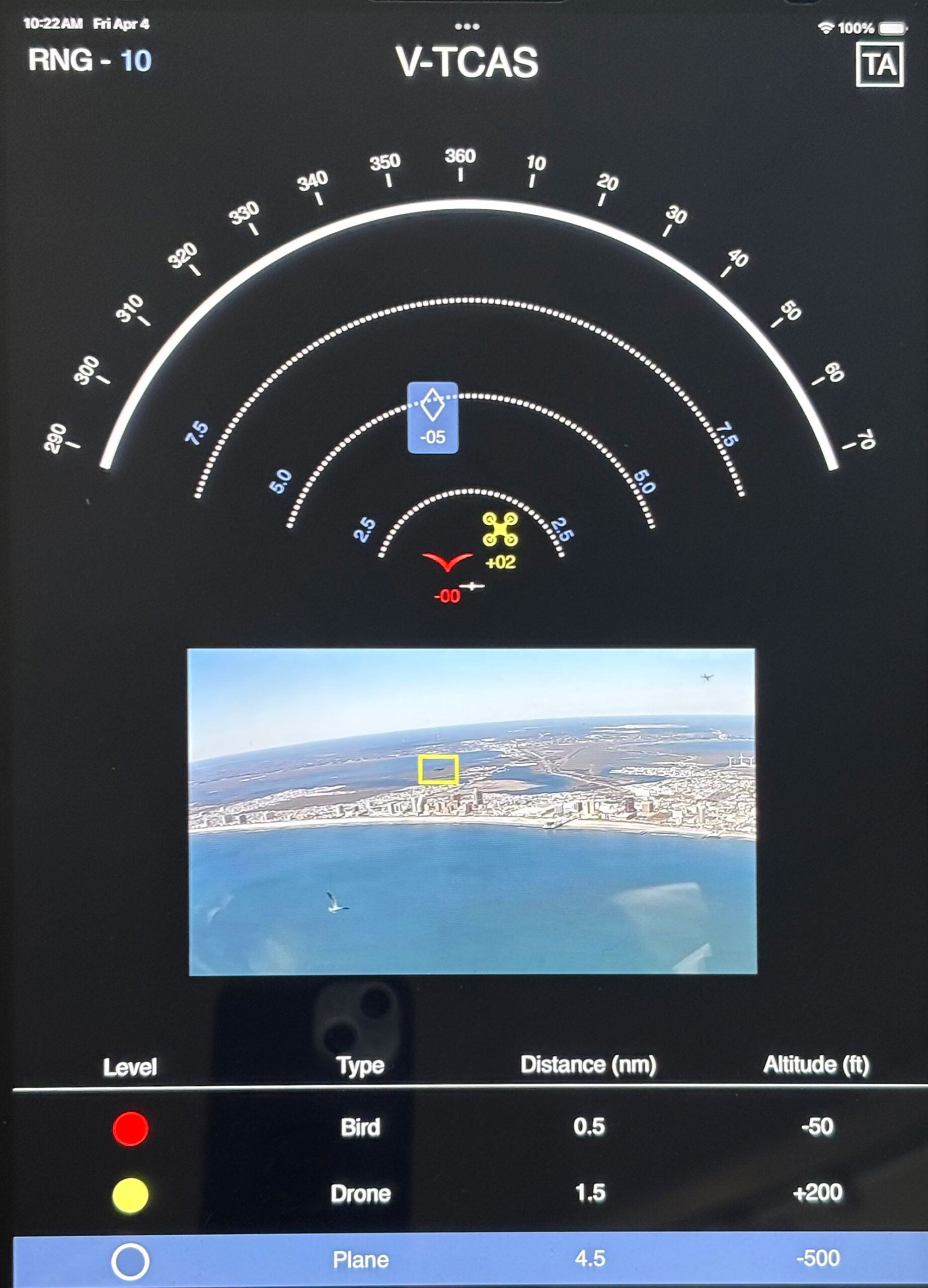
Situational awareness and traffic avoidance were front and center at this year’s Sun ’n Fun Innovation Center. Two companies—one based in France and the other in Pennsylvania—showed off prototypes of soon-to-be-available products featuring technology typically reserved for military and commercial aviation.
France’s CoSENSE AR promoted its new helmet/HUD unit that displays real-time ADS-B traffic, navigation fixes and waypoints, restricted areas, and more. The helmet integrates with your headset and connects to a candy box–sized control unit, which you wirelessly preload with information from ForeFlight before flying. The system, expected to retail for $2500, can be powered via USB and includes an internal battery providing three hours of operation. The battery charges while the unit is powered by USB.
CoSENSE representatives said pilots who tested the system spent significantly less time looking at their tablets or avionics when navigating complex airspace, instead focusing more on what was happening outside the cockpit. More information is available at www.cosense-ar.com or on Instagram at @AR4CARE.

Pennsylvania’s Aileronics displayed its ‘Sentinel’ at the Innovation Showcase. This small, easily mounted scanning camera provides real-time warnings to the pilot—via ForeFlight and/or an iPhone app—about nearby airborne obstacles. Sentinel can detect small drones and large birds more than a mile away and can spot a Cessna 172 at eight miles.

The company describes Sentinel as a 1-pound, visually based TCAS for the GA pilot. They promote the $1000 unit as a necessary supplement to ADS-B, since it can identify objects lacking transponders. The Sentinel’s camera is housed in a Rubik’s cube–sized block that suction-cups to the windscreen. Properly positioned, it provides a 170-degree forward field of view.
When the device detects an object, it sends a real-time alert to ForeFlight or provides an alert and image via the Sentinel app. Using the app, pilots can zoom in for a closer look. Sentinel also supplies ADS-B data, making it a capable replacement for other ADS-B In products. The unit operates on 12- or 24-volt aircraft power or with an optional battery lasting over four hours. A USB-powered version is in development. The company is also working on AI capabilities to detect power lines and cables. More information is available at flywithsentinel.com.













